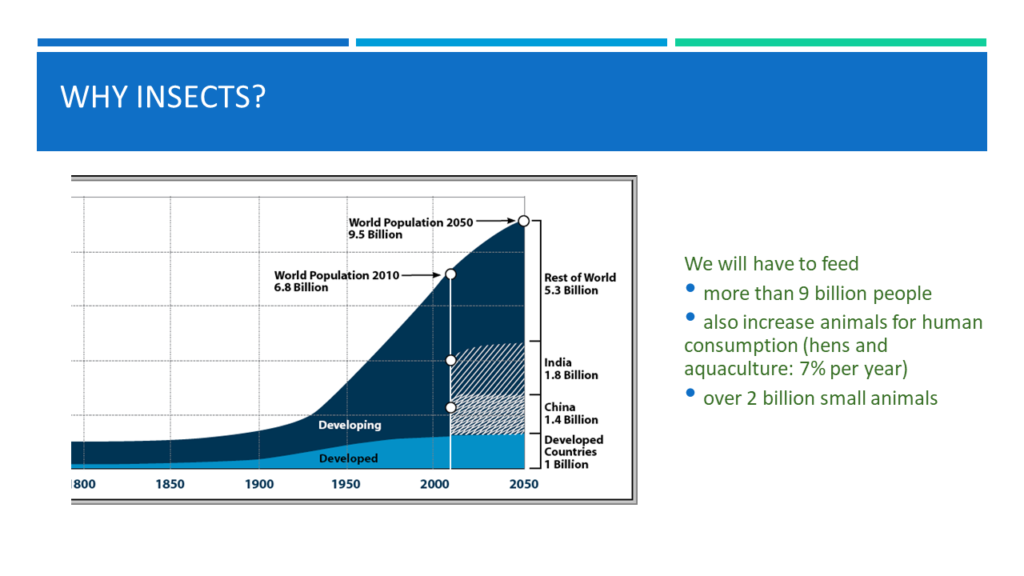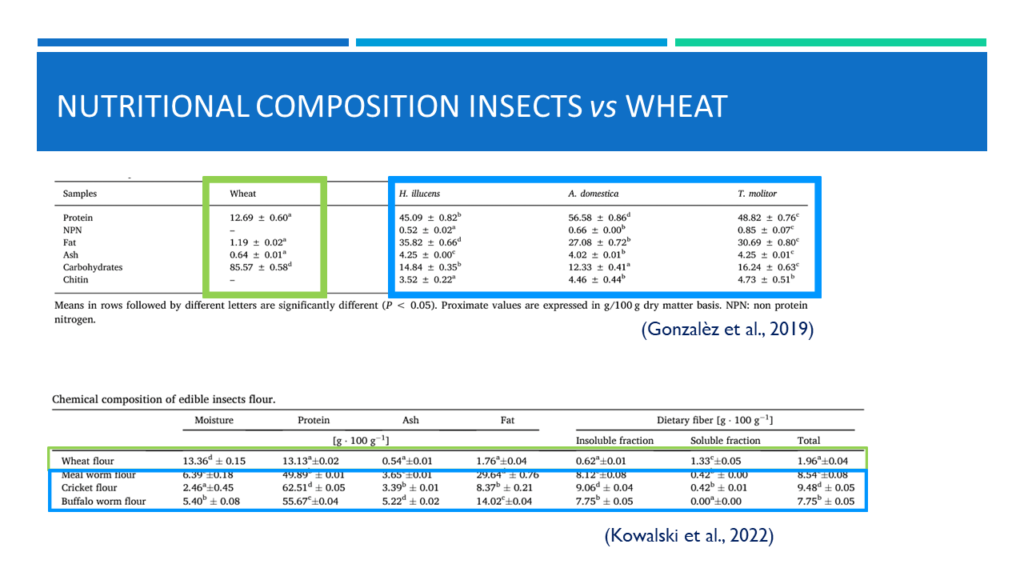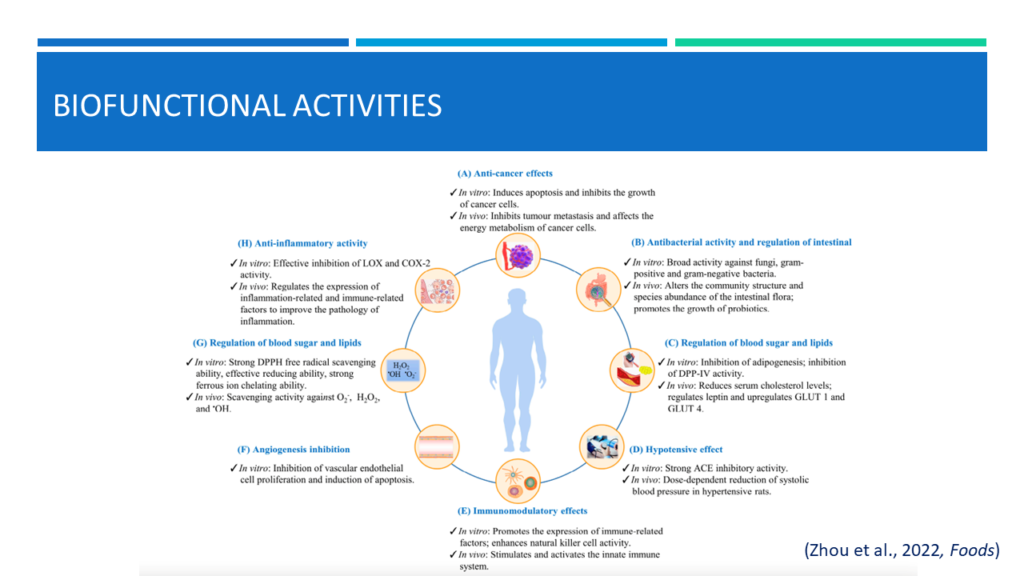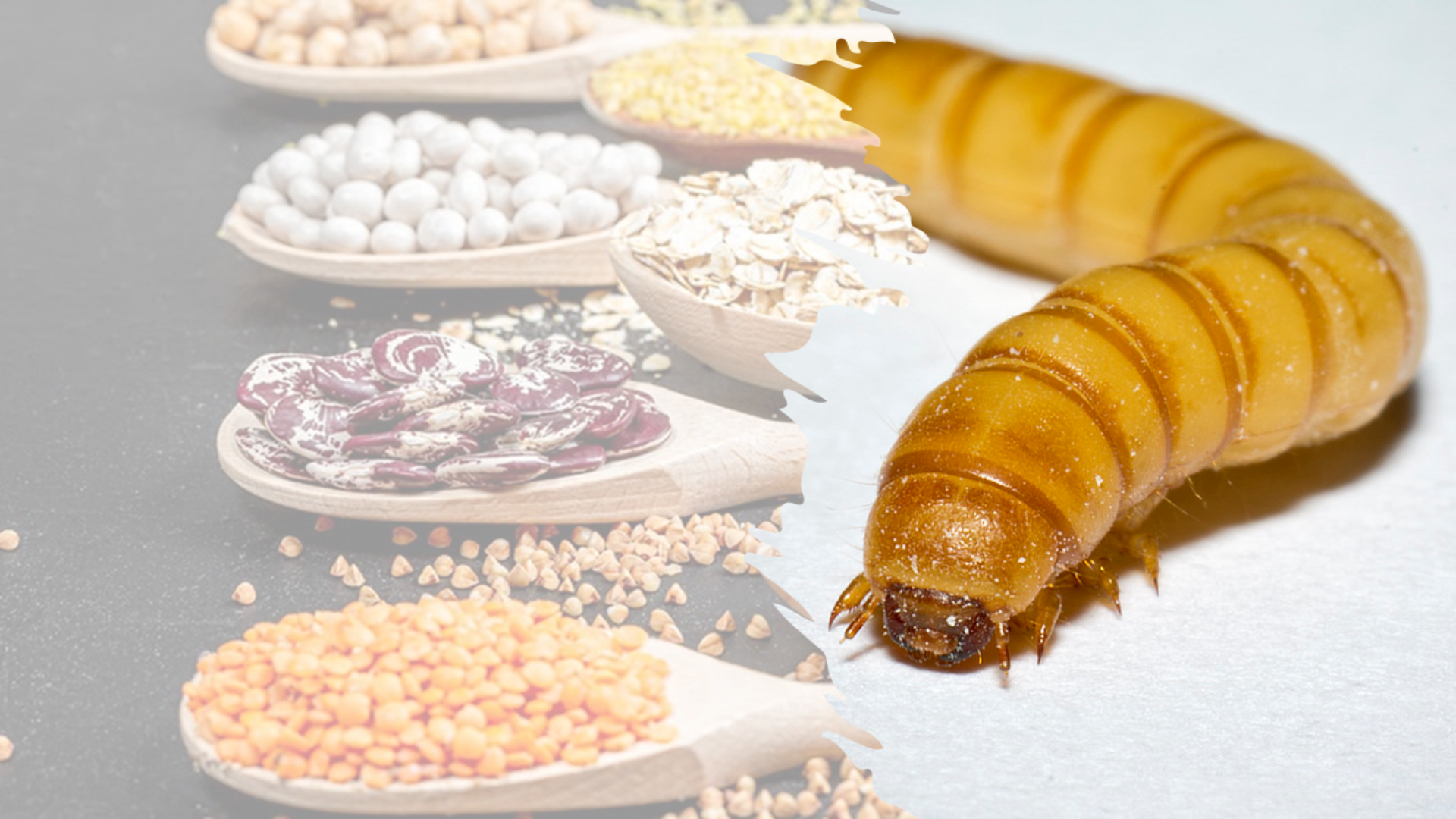The high participation in the webinar we offered yesterday confirmed the great interest, and especially the need, for correct and scientific information on the use of insects in flour production. We anticipated that we would be inviting Costanza Jucker, an influential figure in the field of agricultural entomology, an associate professor at DeFENS (Department of Food, Nutrition and Environmental Sciences) at the University of Milan, to talk about it. Well, Costanza didn’t disappoint our expectations, explaining a complete picture of this “novel food” and answering the many questions of the participants very clearly. Here, in summary, are the different aspects covered.
The Market
There is no doubt that the topic is topical and will be even more so in the coming years because it is estimated that the world market for edible insects will reach $8 billion by 2030, with a produced volume of 730,000 tons. This is a realistic estimate considering that in 2050 the population will exceed 9 billion and there will be a proportionate increase in demand for more food, but especially animal protein, which is needed to feed large and small animals as well.

Some Insect Features
Why are insects so interesting? What is the reason why FAO (Food and Agriculture Organization of the United Nations) has been investing in research for insect-based foods for the past decade or so? There are more than 2,000 species that are already consumed by humans in various countries around the world, and they have characteristics that make their breeding more sustainable when compared to the breeding of other animals. Greenhouse gas emissions are significantly lower, land and water consumption are significantly reduced, and a virtuous zero-waste circular economy is operated. Very interesting is the high conversion efficiency, that is, the ability to convert feed into biomass. If a cow must eat 10 kg of feed to increase its body weight by 1 kg, the amount is significantly reduced with insect-based foods. Finally, nutritionally, these foods offer proteins of high biological content, comparable to those we take in by eating meat, in amounts ranging from 35% to 70% depending on the insects used. Also important is the content of lipids, fiber, vitamins, and minerals, which, as we know, are substances needed to preserve our health.
To date, from European legislation, there are four authorized species, but there are many pending applications, and the number of insects that will be used for processing into grain products is expected to increase significantly soon.
Nutrional Composition Insects vs Wheat
What kind of nutritional supplementation does insect powder offer compared with wheat flour? In general, as we have already seen, it contains more protein (35-70% vs. 13% in wheat), some important amino acids such as lysine, more bioactive substances such as essential fats, several minerals, and vitamins. The amount of insect powder to be added to the grain varies from 2-3% to 25% (freeze-dried or frozen powder or in paste form) depending on the insect species used and the type of food to be produced. Supplementation tests were done for a variety of food products, cookies, muffins, snacks, crackers, protein bars, etc., by adding different amounts of insect powder -5%, 10%, 15% up to 30%- to evaluate the rheological properties, technological characteristics of the doughs and the sensory result. In the case of bread, the presence of cricket powder for example, reduce the specific volume, especially at the 20% inclusion level. Similar tests were done for dry and fresh pasta, in the latter case the addition of 5% did not compromise the final quality in terms of consistency.

Possible Issues
Insect powder, like many other products, is also not exempt from the presence of certain allergens (they can cause rhinitis, dermatitis, conjunctivitis, etc. in already predisposed individuals) and possible microbiological or chemical contamination, a problem easily overcome with proper husbandry management. Studies conducted, both in vitro and in vivo, have highlighted numerous positive aspects that include anti-cancer, anti-inflammatory, antibacterial, blood sugar and fat balancing effects, etc.

Finally, Constance Jucker also talked about the limitations that, to date, affect the Western market. There are psychological barriers related to disgust and fear of eating this food, even though we already consume about 500 g per year without realizing it. Another problem is the current costs, which are very high, but are expected to decrease significantly as supply increases. There are also several issues to be solved involving species choice, genetic selection, farm safety, mechanization, processing, and high energy consumption. In conclusion, it seems to be a very interesting challenge, but the timeframe needed to create a mass market with this food is still long. The timeframe will be largely contingent on research, however, which is moving with great effort and resources so that edible insects can soon become a full-fledged part of the human diet.



